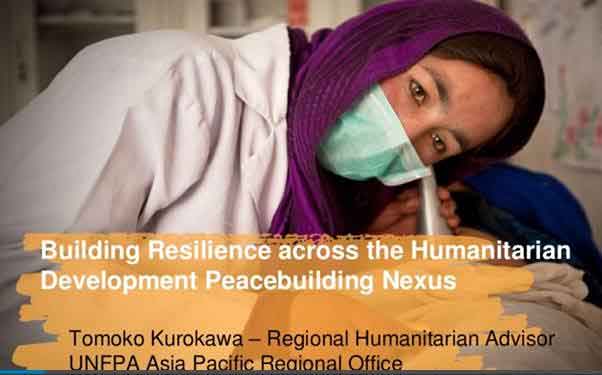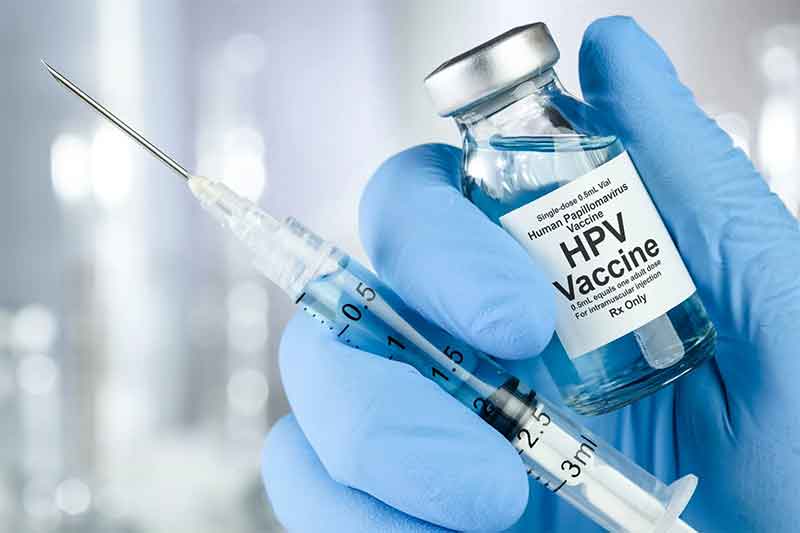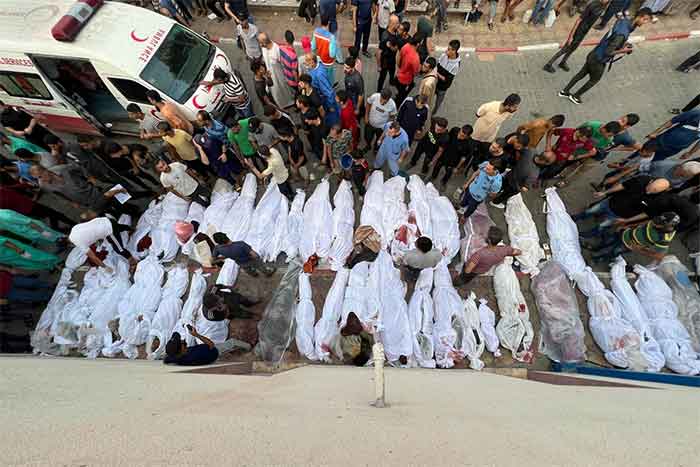
The number of people affected and displaced by conflicts and natural disasters has almost doubled over the past decade and continues to rise. Climate crisis is a major driver and amplifier of disaster risks and losses, even as armed conflicts compel hordes of people to flee their homes in search of safety. Slow onset disasters, like extreme temperatures and droughts, have added to disaster related economic losses.
Infectious disease outbreaks among refugees and displaced persons are also becoming increasingly common and pose a major threat to health security and social protection. The impact is especially severe on women and girls, people living with disabilities and other vulnerable groups.
This changing humanitarian landscape is even more relevant in the Asia Pacific region, which is the most disaster-prone region of the world. In 2018, 50% of all the 281 global natural disasters occurred in Asia Pacific, with 8 out of the 10 deadliest ones also in this region.
The growing impact of recurrent and protracted disasters and humanitarian crises is posing a major threat to sustainable development and reinforces the importance of developing long term interventions that address humanitarian needs as well as development and peacebuilding challenges.
While delivering the plenary address at the 9th virtual session of the 10th Asia Pacific Conference on Reproductive and Sexual Health and Rights (APCRSHR10), Dr Tomoko Kurokawa, Regional Humanitarian Advisor at United Nations Population Fund (UNFPA) Asia Pacific, made a case for building resilience across the humanitarian, development and peace-building triple nexus.
What is triple nexus?
The “humanitarian, development and peace nexus” is about synergising the efforts of members of the humanitarian, development, and peace community by ensuring that humanitarians can focus on acute needs and those in development can focus on long term resilience, promoting peaceful and robust communities.
What is resilience?
Resilience is the ability of an individual, a community or a country to cope with, adapt and recover positively, efficiently and effectively from the impact of a natural disaster, violence or conflict. Resilience covers all stages of disaster – from prevention to adaptation.
Dr Kurokawa calls resilience “the unifying approach that transcends the various pillars and is a prerequisite for achieving sustainable development, peace and prosperity for all and particularly those who are furthest behind”. Systems, institutions, communities, families and individuals are considered resilient when they have the capacities and resources to cope with and bounce back from both anticipated and unanticipated shocks.
She gives a very lucid explanation of resilience at different levels.
“At the national and societal level resilience may be about having positive social norms and customs that support gender equality. It entails having early warning and early action systems and having strong social protection schemes. At the institutional level resilience is having strong health and school infrastructures, sea walls built along vulnerable coastal areas and mobile health units and skilled personnel that can mobilize quickly at the onset of a disaster. At the community level it means local leadership and participation and decision making of women and youth groups. At the family and individual level it means having equal household decision making, equal livelihood and economic opportunities for all, especially women and having supportive intergenerational relationships.”
An individual’s resilience may depend on factors such as their economic well-being, education, health, and age as these define their capacity to cope and adjust. Building communities’ resilience is critical to minimise the impact of disasters and prevent future humanitarian crises.
The Sendai Framework for disaster risk reduction – the first major agreement of the post 2015 development agenda – provides governments with concrete actions to protect development gains from the risks of disaster. It prioritises that disaster risk reduction is inclusive of and accessible for people disproportionately affected by disasters. It also advocates for gender and disability to be integrated in all policies of disaster risk management and the comeback of young people in humanitarian action.
Even under normal conditions, reproductive health issues are some of the leading causes of death, illness and disability among women. Moreover, during and after any disaster, women and girls are disproportionately exposed to the risk of loss of livelihood, security and even lives. They face significantly increased risks for unintended pregnancies, gender-based violence, sexually transmitted infections and maternal mortality, says Dr Tomoko Kurokawa.
Globally some 500 women and girls die every day from pregnancy and childbirth related complications in countries facing humanitarian and fragile contexts. This is often a result of unavailability of sexual and reproductive health services and not having access to delivery and emergency obstetric services.
The non-availability of voluntary family planning services (like condoms and emergency contraception) in crisis situations increases the risk of unintended pregnancies, increases health risks for pregnant women and for those who resort to unsafe abortions. Gender based violence, one of the most pervasive human rights violations, that is already widespread in times of peace, is exacerbated during conflicts and disasters when communities’ protection systems break down.
Dr Tomoko Kurokawa feels that during emergencies availability of sexual and reproductive health and family planning services and protection of women from violence are as essential as food and shelter. So much so that very often access to basic sexual and reproductive health services determines the choice between life and death for women and girls.
The COVID-19 pandemic has put to test all health systems and national response capacities – both in terms of scaling of public health preparedness as well as for mitigation of broader socio-economic impacts. Some countries in the Asia Pacific region have also had to simultaneously contend with the already existing humanitarian crises and overlapping natural disasters. It has made them particularly vulnerable and less equipped to respond effectively.
The pandemic has already had far reaching impacts on poverty, inequality, employment, economic downturn, human rights protection, which will leave long lasting scars on the process of recovery and rehabilitation and inter-development work for years to come.
Recovery will require application of a comprehensive approach across the triple nexus through a resilience lens. There are already reports of increase in maternal and neonatal morbidity and mortality, increase in unmet need for family planning and increased risk of gender-based violence and harmful practices during the lockdowns.
But Dr Tomoko Kurokawa is upbeat with examples of innovative and creative demonstrations of resilience at various levels for the continuity of provision of sexual and reproductive health information and services across the Asia Pacific region during the pandemic. She shares that “In Pakistan, a women’s safety App was upgraded as an innovative solution to counteract challenges posed by lack of mobility and gender-based violence during the lockdown. In Afghanistan, a youth health line providing adolescent sexual and reproductive health information and services has reached over 5000 young people. In Mongolia, telemedicine services were set up by practising physicians to provide quality sexual and reproductive health services. In Mongolia a legendary Mongolian queen chatbot avatar provides counselling to adolescents about life and love on Facebook. In the Philippines, a free condom delivery service under ‘a condom heroes program’, is enabling people in lockdown to access condoms”.
Investing in resilience helps prevent and curtail economic, environmental and human losses in the event of a crisis, thus protecting development gains and benefiting many of the sustainable development goals.
The ‘new normal’, necessitated by COVID-19, will require agility, creativity and nimbleness to bridge the humanitarian development peace divide and to empower women, girls and young people as agents of change to build resilience and ensure sustainability of effective humanitarian action.
Shobha Shukla is the founding Managing Editor of CNS (Citizen News Service) and is a feminist, health and development justice advocate. She is a former senior Physics faculty of Loreto Convent College and current Coordinator of Asia Pacific Media Network to end TB & tobacco and prevent NCDs (APCAT Media). Follow her on Twitter @shobha1shukla or read her writings here www.bit.ly/ShobhaShukla
SIGN UP FOR COUNTERCURRENTS DAILY NEWSLETTER
















































